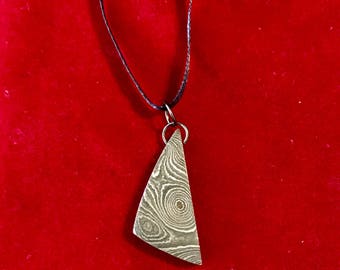

If the ends of these pieces are etched, they will reveal vertical layers that are distorted and starting to form the “W’s.” The third weld sequence will distort the layers even more and make the “W’s” much more dramatic. This bar is then cut again and restacked for the third weld sequence. When the second weld sequence is complete, the layers remain vertical.
Cold steel raindrop damascus free#
This bar is then ground free of scale, cut into pieces and restacked. Then, during the drawing process, the billet is rotated 90 degrees and forged into a rectangular bar with vertical layers. With the “W’s” pattern, the initial billet is stacked just like a flat-layered billet, and welded. More advanced patterns include the “W’s” design, and mosaic damascus. Before moving on to more advanced patterns and techniques, the damascus steel maker should become adept at the forge welding process. These are the most basic damascus patterns and the same patterning techniques, and several others, are employed for more advanced patterns. The resulting pattern will look like bull’s-eyes or raindrops on a pond. Whether pressed or ground, the ladders should be staggered from side to side.Ĭreating the raindrop or pool-and-eye pattern is essentially the same process as forge welding a ladder pattern, except that dimples are pressed or drilled into the damascus bar instead of grooves. After the grooves are ground, the blade is forged to shape with all the grooves forged out of the bar, resulting in a distinct ladder pattern. If the ladder designs are ground or milled into the bar, they should be approximately one-third the thickness of the bar. The bar is forged to the desired blade shape and the ladder pattern becomes visible. The grooves are pressed in with dies made of round rods, and stop blocks can be used to insure the proper thickness of the finished bar.Īfter the grooves are pressed into the bar, it is ground flat, removing all the high spots.

If the pattern is pressed into the blade, it should be approximately double the thickness required in the finished bar. Ladder patterns are accomplished by pressing or grinding grooves across a damascus bar.
Cold steel raindrop damascus download#
Keep reading in this download from BLADE. Twisted blades should be left a little thicker than other patterns as grinding deeper makes the star effect greater and the overall look is more pleasing. The center of each twist gives a star effect. The twisting can be gradual or tight for varied effects. The bar is heated until it is close to welding temperature, and then twisted.

A bar of the desired number of layers is forged into a square and the corners are forged down slightly. Twist patterns are similarly self-explanatory. The distortion causes the flat layers to bend and results in a flowing, organic look to the material, especially when the edge bevels of the blade are finish-ground. The layers remain relatively flat and some distortion usually occurs during the forging. Patterning of the flat laminated billet can be accomplished in many ways. It is also possible to forge weld sections of high- and low-layer bars into one billet and get a high contrast through patterning. In specialized damascus patterns, such as radials or jellyrolls, far fewer layers are needed. The layer counts are only a starting point and you may find that you prefer more or less.


 0 kommentar(er)
0 kommentar(er)
